UPSC Daily Current Affairs- 29th January 2024 | Current Affairs & Hindu Analysis: Daily, Weekly & Monthly PDF Download
GS-I
Dogri folk dance
Subject: Art and Culture
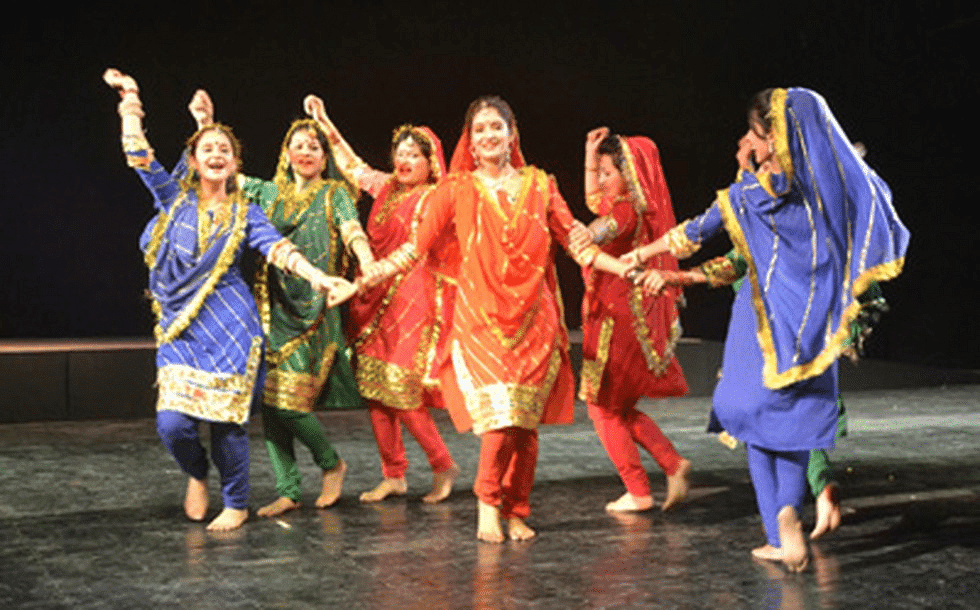
Why in News?
Recently, the Union Government of India conferred Padma Shri award to Jammu’s Dogri folk dancer Romalo Ram.
About Dogri folk dance:
- It is a dance performed in Duggar region of Jammu.
- It is generally performed by a group of artists whose main leader sings the song as well as dances while others are in the sitting position providing beats of Drums and Chimta.
- It is performed in functions and social gatherings.
- There are other varieties of this dance with the men and women or only women performing dance in groups to the music of some famous folk song in colourful traditional dresses.
- Dogra folk-dances have an important role as a part of worship, ceremonies and a pastime but the main force behind the folk-dances is the celebratory mood.
- Other dance forms of Jammu region: Dheku, Phummani, jagran, Ckauki, Chhajja, Kuddha, Hirana etc. are the main dances. Bhagtan, Raas , Chandrauli etc. are main folk-drama styles.
Source: Hindustan Times
GS-II
International Court of Justice
Subject: Polity
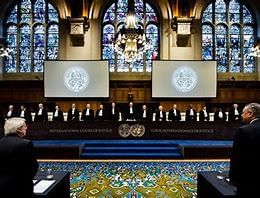
Why in News?
Recently, the International Court of Justice ruled that Israel must take steps to prevent genocide in Gaza.
Background:-
- The International Court of Justice issued an interim ruling in a wider case about whether Israel is committing genocide against Palestinians in the enclave.
About the International Court of Justice:-
- Established: June 1945.
- HQ: The Hague (Netherlands).
- The International Court of Justice (ICJ) is the principal judicial organ of the United Nations (UN).
- It was established in June 1945 by the Charter of the United Nations and began work in April 1946.
- The seat of the Court is at the Peace Palace in The Hague (Netherlands).
- Of the six principal organs of the United Nations, it is the only one not located in New York (United States of America).
- The Court’s role is to settle, in accordance with international law, legal disputes submitted to it by States and to give advisory opinions on legal questions referred to it by authorized United Nations organs and specialized agencies.
- The Court is composed of 15 judges, who are elected for terms of office of nine years by the United Nations General Assembly and the Security Council.
- It is assisted by a Registry, its administrative organ.
- Its official languages are English and French.
Source: New York Times
European Union as an AI innovation advocate
Subject: International Relations

Why in News?
To address worries that Europe might be putting too many regulations on artificial intelligence (AI), the European Commission has introduced a set of rules.
- These rules aim to help start-ups and other businesses get access to hardware like supercomputers and computing power and allows them to create large-scale AI models.
- This move comes after the political agreement reached in December 2023 on the EU AI Act, which is the first-ever comprehensive law on AI in the world.
- The goal of this law is to encourage the development, deployment, and use of trustworthy AI in the European Union (EU).
Europe’s AI innovation plan
- The European Commission has launched a package of measures to support European startups and small businesses in the development of trustworthy AI.
- The plan includes:
- Acquiring, upgrading and operating AI-dedicated supercomputers to enable fast machine learning and training of large general-purpose AI (GPAI) models.
- GPAI models are AI systems that can perform a wide range of tasks.
- They can be applied to many different tasks in various fields, often without substantial modification and fine-tuning.
- Facilitating access to the AI dedicated supercomputers, contributing to the widening of the use of AI to a large number of public and private users, including start-ups and SMEs.
- Supporting the AI startup and research ecosystem in algorithmic development, testing evaluation and validation of large-scale AI models.
- Enabling the development of a variety of emerging AI applications based on GPAI models.
- Acquiring, upgrading and operating AI-dedicated supercomputers to enable fast machine learning and training of large general-purpose AI (GPAI) models.
Why is the EU especially focusing on AI innovation?
- Overregulating AI
- The most visible innovation in AI so far has been led by American companies, especially OpenAI and Google.
- Europe has so far regulated technologies from a human-rights-first approach.
- However, it was being accused by the industry of yet again regulating AI even before it has spread across the continent in a meaningful way.
- Criticism of AI Act of December 2023
- Last year, the European Commission agreed to implement an AI Act, but it has faced criticism.
- The law sets rules for using AI in the EU, including clear guidelines for law enforcement agencies. Consumers can complain about any misuse of AI.
- The Act also limits facial recognition technology and the use of AI to control people's behaviour.
- Companies that break the rules will face strict penalties.
- Governments can only use real-time biometric surveillance in public areas only when there are serious threats involved, such as terrorist attacks.
How is the EU’s plan similar to India’s?
- As part of the programme being developed by India, the government wants to:
- develop its own sovereign AI,
- build computational capacity in the country, and
- offer compute-as-a-service to India’s startups.
- The capacity building will be done both within the government and through a public-private partnership model.
- This highlights New Delhi’s intention to reap dividends of the impending AI boom which it envisions will be a crucial economic driver.
- In total, India is looking to build a compute capacity of:
- anywhere between 10,000 GPUs (graphic processing units) and 30,000 GPUs under the PPP model, and
- an additional 1,000-2,000 GPUs through the PSU Centre for Development of Advanced Computing (C-DAC).
- The government is exploring various incentive structures for private companies to set up computing centres in the country.
- This includes:
- a capital expenditure subsidy model which has been employed under the semiconductor scheme, a model where companies can be incentivised depending on their operational expenses; or
- offering them a usage fee.
- The government’s idea is to create a digital public infrastructure (DPI) out of the GPU assembly it sets up so that startups can utilise its computational capacity for a fraction of the cost.
- The startups will not need to invest in GPUs which are often the biggest cost centre of such operations.
Source: Indian Express
What is Ladakh’s demand on Gilgit-Baltistan?
Subject: Polity and Governance

Why in News?
The socio-political landscape of Ladakh is witnessing ongoing dialogues and demands on Gilgit-Baltistan, primarily presented by the Leh Apex Body (LAB) and Kargil Democratic Alliance (KDA) to the Ministry of Home Affairs (MHA).
- The demands encompass a range of issues, including territorial control expansion, restoration of statehood, special status under the Sixth Schedule and Article 371, and exclusive rights over recruitment.
Ladakh’s Current Status
- Formation as Union Territory: Ladakh, spanning 59,146 square kilometers, became a Union Territory on August 5, 2019, following the abrogation of Article 370.
- Governance: Unlike Jammu and Kashmir, Ladakh does not have a legislature but is governed by two elected hill councils, LAHDC-Kargil and LAHDC-Leh.
- Population and Demographics: Ladakh, with a population of 2.74 lakh (2011 census), is a Muslim-majority UT, with Buddhists dominating Leh district and Shia Muslims in Kargil. The region witnessed varied reactions to the abrogation of Article 370, with Leh supporting UT status and Kargil expressing a desire for reunification with Kashmir.
Latest Demands of the Region
- Protests against UT Status: Over the past two years, both Leh and Kargil initiated protests against the UT status without a legislature, advocating for the restoration of statehood.
- Special Status under Sixth Schedule: There is a collective demand for special status under the Sixth Schedule and Article 371, similar to other northeastern states, to preserve the region’s ecological fragility and limit external influences.
- Exclusive Recruitment Rights: Ladakh seeks exclusive rights over recruitment, proposing the establishment of the Ladakh Public Service Commission for gazetted jobs and empowering hill councils for lower rung staff recruitment.
Territorial Control Expansion
- Historical Context: The memorandum underlines Ladakh’s historical connection to Gilgit-Baltistan, part of the pre-1947 Ladakh district now under Pakistan’s occupation.
- Territorial Control Demand: Ladakh demands an extension of territorial control up to Gilgit-Baltistan, advocating for attempts to include this area into Ladakh. Reservation of seats for Gilgit-Baltistan is sought once a legislature is granted.
- Strategic and Stability Considerations: The memorandum emphasizes that empowering locals will enhance stability in the region, especially in the context of Ladakh’s volatile Line of Actual Control (LAC) with China.
Centre’s Response and Committees Formed
- Committees Formed: In response to street protests, the Centre formed committees in 2022 and 2024, led by Ministers G. Kishan Reddy and Nityanand Rai, respectively, to engage with LAB and KDA members.
- Assurance and Ongoing Talks: The Centre assured finding appropriate solutions to language, culture, and land conservation issues in Ladakh. Ongoing talks are aimed at addressing the demands and fostering a structured dialogue between New Delhi and Ladakh.
Conclusion
- Ladakh’s socio-political dialogue continues, reflecting the diverse sentiments and demands of its residents.
- The region’s historical context, strategic considerations, and ecological concerns play a crucial role in shaping the ongoing negotiations.
- As Ladakh awaits resolutions to its demands, the dialogue remains a critical component in navigating the complex dynamics between the Centre and this unique Union Territory.
Source: The Hindu
GS-III
Central Board of Indirect Taxes and Customs (CBIC)
Subject: Economy
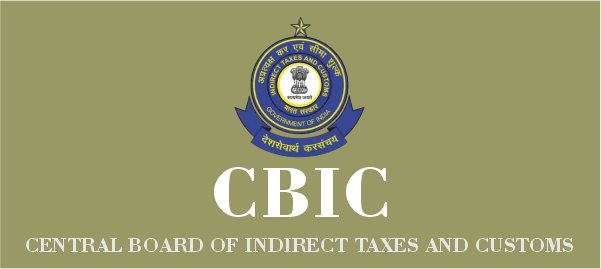
Why in News?
Recently, Central Board of Indirect Taxes and Customs (CBIC) celebrated International Customs Day-2024.
Background:-
- This year, the World Customs Organisation (WCO) has dedicated the International Customs Day to the theme of ‘Customs engaging traditional and new partners with purpose’.
About Central Board of Indirect Taxes and Customs (CBIC):-
- Central Board of Indirect Taxes and Customs is a part of the Department of Revenue under the Ministry of Finance.
- It is a statutory body established under the Central Boards of Revenue Act, of 1963.
- It was formed in 1964 when the Central Board of Revenue was split into the Central Board of Direct Taxes (CBDT) and the Central Board of Excise and Customs.
- Central Board of Excise and Customs was renamed the Central Board of Indirect Taxes and Customs in 2018.
- It is the nodal national agency responsible for administering:-
- Customs
- GST
- Central Excise
- Service Tax
- Narcotics in India.
- The Board is the administrative authority for its subordinate organizations, including Custom Houses, Central Excise and Central GST Commissionerate and the Central Revenues Control Laboratory.
- Functions performed by the CBIC include:-
- Formulation of policy concerning levy and collection of Customs, Central Excise duties, Central Goods & Services Tax and IGST.
- Prevention of smuggling.
- Administration of matters relating to Customs, Central Excise, Central Goods & Services Tax, IGST and Narcotics to the extent under CBIC’s purview.
Source: PIB
Western Equine Encephalitis
Subject: Science and Technology

Why in News?
Recently, an outbreak of Western Equine Encephalitis Virus occurred in Argentina.
Background:-
- The present outbreak also comes in the context of an ongoing outbreak in horses in Argentina and Uruguay.
About Western Equine Encephalitis:-
- It is a mosquito-borne infection.
- It is caused by the Western Equine Encephalitis Virus (WEEV), which belongs to the Togaviridae family of viruses with neurological symptoms in severe cases, and there is no specific antiviral treatment.
- The virus has an approximately 11.5 kilobases long single-stranded RNA genome and is a recombinant of the eastern equine encephalitis virus (EEEV) and a Sindbis-like virus.
- Passerine birds are thought to be the reservoir and equine species as intermediate hosts.
Symptoms:-
- Fever
- Headache
- Nausea
- Vomiting
- Poor appetite
- Tiredness
- Weakness
Transmission:-
- The primary mode of WEE virus transmission is through the bites of infected mosquitoes, which act as vectors.
- The principal vector is Culex tarsalis; however, there are multiple vectors that contribute to transmission, including Aedes melanimon, Aedes dorsalis, and Aedes campestris.
Diagnosis:-
- The diagnosis of WEE infection requires confirmation through laboratory techniques since the clinical presentation is not specific.
- Western equine encephalitis is most common in the plains regions of the western and central United States.
- It also has been reported in Central America and South America.
Source: The Hindu
Nitrogen Hypoxia
Subject: Science and Technology
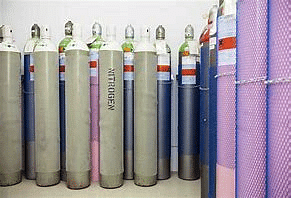
Why in News?
Recently, Alabama successfully executed a man who spent decades on death row using a new method called nitrogen hypoxia.
About Nitrogen hypoxia:
- Hypoxia is a medical term for a state of insufficient oxygen in the body.
- Nitrogen hypoxia is a process where pure nitrogen gas, or nitrogen gas at concentrations high enough to be lethal, is inhaled to the point of causing asphyxiation.
- It is a relatively new alternative to more common forms of capital punishment, like lethal injection and electrocution.
- In this method of execution, a respirator mask is placed over the inmate's face, and pure nitrogen is pumped into the person's lungs instead of oxygen.
- It leads to unconsciousness and then death from lack of oxygen.
Key facts about Nitrogen
- It appears as a colourless odourless gas.
- It makes up the major portion of the atmosphere.
- It is important for plant growth and can be ‘fixed’ by lightning or added to soils in fertilisers.
- It is important to the chemical industry. It is used to make fertilisers, nitric acid, nylon, dyes and explosives.
- Nitrogen gas is also used to provide an unreactive atmosphere. It is used in this way to preserve foods and in the electronics industry during the production of transistors and diodes.
- Large quantities of nitrogen are used in annealing stainless steel and other steel mill products. Annealing is a heat treatment that makes steel easier to work.
- Liquid nitrogen is often used as a refrigerant. It is also used to rapidly freeze foods, helping them to maintain moisture, colour, flavour and texture.
Source: Times of India
Kerala Governor gets Z+ Security Cover
Subject: Defense and Security
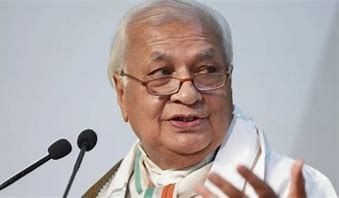
Why in News?
The Union Home Ministry has provided a Z+ category security cordon manned by Central Reserve Police Force (CRPF) troopers around Kerala Governor Arif Mohammad Khan.
VIP Security Provisions in India
- In India, security is provided to high-risk individuals by the police and local government.
- The level of security needed by any individual is decided by the Ministry of Home Affairs, based on inputs received from intelligence agencies which include the IB and R&AW.
- Individuals such as PM, home minister, and other officials such as the National Security Advisor generally get security cover because of the positions they occupy.
- In addition to this, persons who are believed to be under threat also receive security cover.
What is Z+ Category Security?
In India, the category covers are X, Y, Y-plus, Z, Z-plus, and SPG (Special Protection Group).
- X Category: The protectee gets one gunman. Protectees in the Y category have one gunman for mobile security and one (plus four on rotation) for static security.
- Y Plus category: It receives the cover of two gunmen (plus four on rotation) for mobile security, and one (plus four on rotation) for residence security,
- Z Category: It has six gunmen for mobile security and two (plus 8) for residence security. They get 10 security personnel for mobile security, and two (plus 8) for residence security.
- Z Plus Category: It is provided by National Security Guard commandos whereas the other category of security is provided by the Delhi police or the ITBP or CRPF personnel.
What about Special Protection Group (SPG) Cover?
- The SPG cover is meant only for the PM and his immediate family.
- After Indira Gandhi was assassinated by her own security guards in 1984, the Rajiv Gandhi government decided to create a special cadre of security personnel for the PM.
- In March 1985, following the recommendations of a committee set up by the Home Ministry, a special unit was created for this purpose under the Cabinet Secretariat.
- This unit, initially called the Special Protection Unit, was renamed as Special Protection Group in April 1985.
Source: The Telegraph
|
52 videos|5374 docs|1136 tests
|
FAQs on UPSC Daily Current Affairs- 29th January 2024 - Current Affairs & Hindu Analysis: Daily, Weekly & Monthly
| 1. What is the significance of Dogri folk dance? |  |
| 2. What is the role of the International Court of Justice? |  |
| 3. How is the European Union advocating for AI innovation? |  |
| 4. What is Ladakh's demand on Gilgit-Baltistan? |  |
| 5. What is the role of the Central Board of Indirect Taxes and Customs (CBIC)? |  |
















